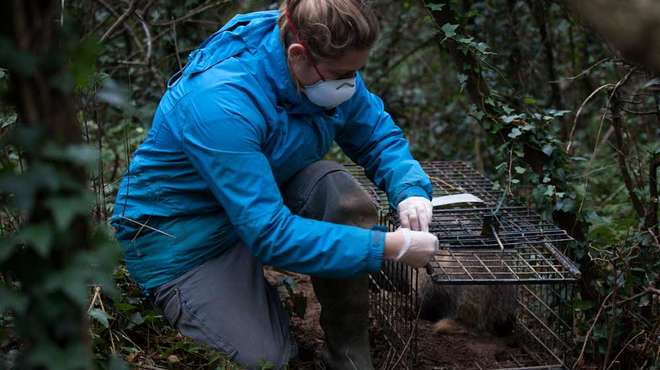Culling can drive badgers to roam 61% further afield, potentially increasing risk of transmission, according to a study by the Zoological Society of London (ZSL).
The study, which was led by researchers from ZSL and Imperial College London, was published this week in the Journal of Applied Ecology.
The paper reveals that, after a population was culled, surviving badgers covered 61% more land each month than they had before the cull began. As a result, the researchers concluded that badgers explore new areas as individuals are removed from neighbouring groups and territories open up.
Badgers were also found to visit 45% more fields each month, and the odds of a badger visiting neighbouring territories each night increased 20-fold – potentially increasing the risk of TB transmission both to cattle and to other badgers.
The changes were observed as soon as culling began, meaning even badgers that were killed may have first spread the infection over wider areas while management was being implemented.
Badgers, however, spent less time outside of their setts in culled areas – spending on average 91 minutes less out and about each night.
ZSL scientists said they believed this could be a result of reduced competition and increased food availability as badgers are removed from the population.
The research group from ZSL’s Institute of Zoology, and Imperial’s MRC Centre for Global Infectious Disease Analysis studied 67 badgers across 20 cattle farms in areas with and without farmer-led culling in Cornwall, collecting GPS-collar data between 2013 and 2017.
Lead author and ZSL-Imperial PhD researcher, Cally Ham explained: “Badgers spend a large proportion of the night foraging for food above-ground, and as culling reduces the size of the population, competition for food will also be reduced.
“We believe this accounts for the reduced activity levels, as well as bold individuals becoming obvious targets for culling and being quickly removed from the population.
“Because culling partly relies on shooting badgers moving around at night, the fact that badgers were active for fewer hours per night could actually be undermining culling efforts to further control badger numbers.”
Criticism
However, there is some criticism that the study’s sample size was too small to be meaningful.
National Farmers’ Union vice president Stuart Roberts said: “The ZSL has a long-standing campaign against wildlife controls in an effort to combat TB.
We respectfully disagree with their position as culling badgers has a proven impact on TB outbreaks among cattle; the aim must be to get rid of this awful disease.
“As regards the ZSL’s latest report, I would question whether it is possible to make conclusions about the effectiveness of this policy from a sample size this small, focussed on only one county.
“We are still awaiting the peer-reviewed report examining the effectiveness of the cull at reducing TB but previously published peer-reviewed research, and anecdotal evidence from farmers in these areas, indicates strongly that TB is being reduced as a result of controlling the wildlife which carry and spread the disease. We do not see similar convincing outcomes from vaccination.”
Defra response
A spokesman for Defra added: “The Government’s policy already takes into account a potential increase in badger movement by ensuring there is an intensive cull across an area.
“Also, other research shows culls in Higher Risk Areas have had a positive impact on bovine TB in cattle, which is the key measurement by which the effectiveness of TB prevention can be tested.
Bovine TB remains the greatest animal health threat to the UK, costing taxpayers over £100 million every year as well as causing devastation and distress for farmers and rural communities.
“There is no single measure that will provide an easy answer to beating the disease and we are pursuing a range of interventions to eradicate it by 2038, including tighter cattle movement controls, regular testing and vaccinations.”

